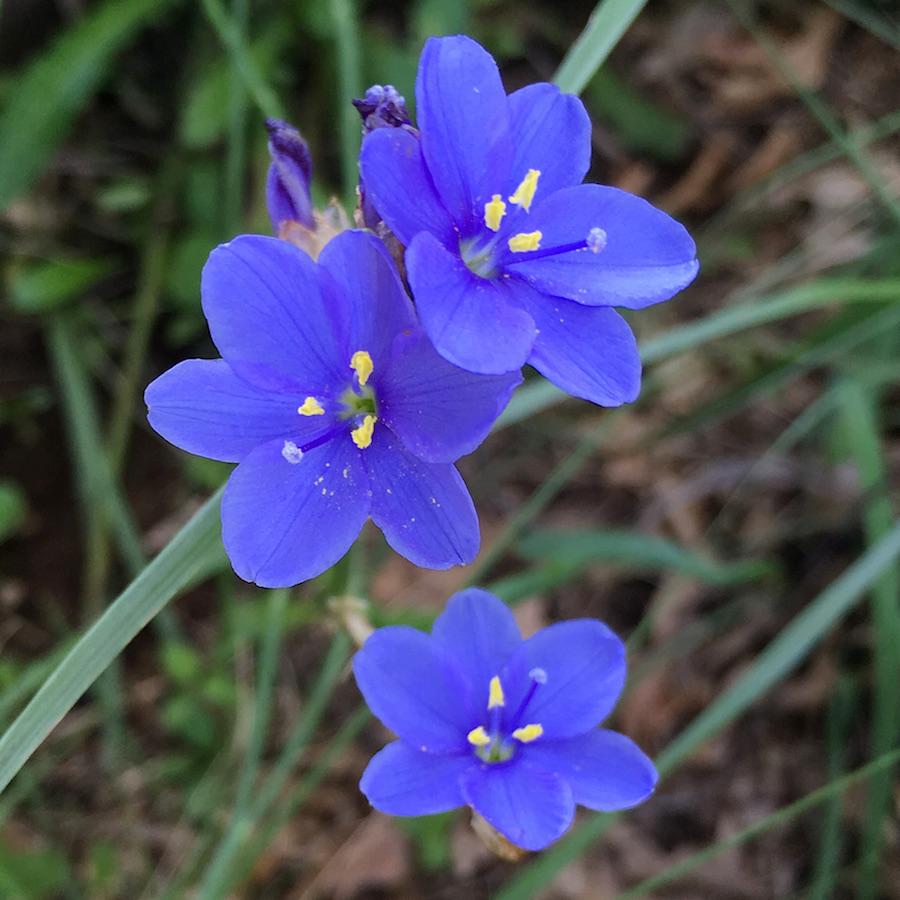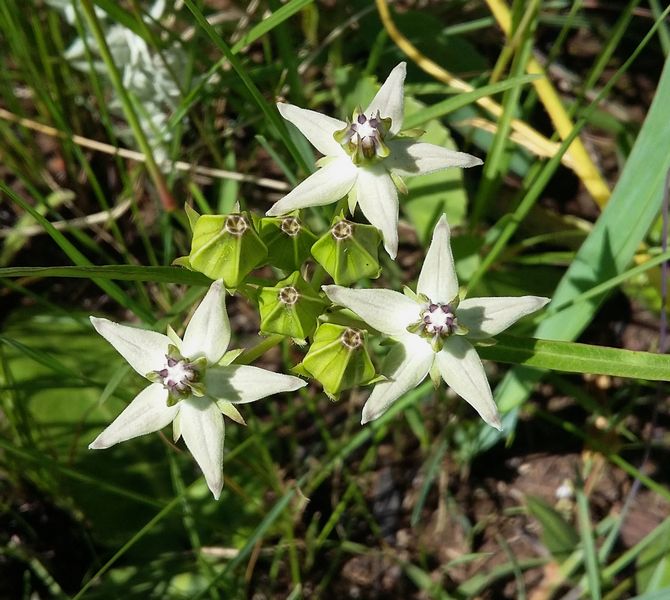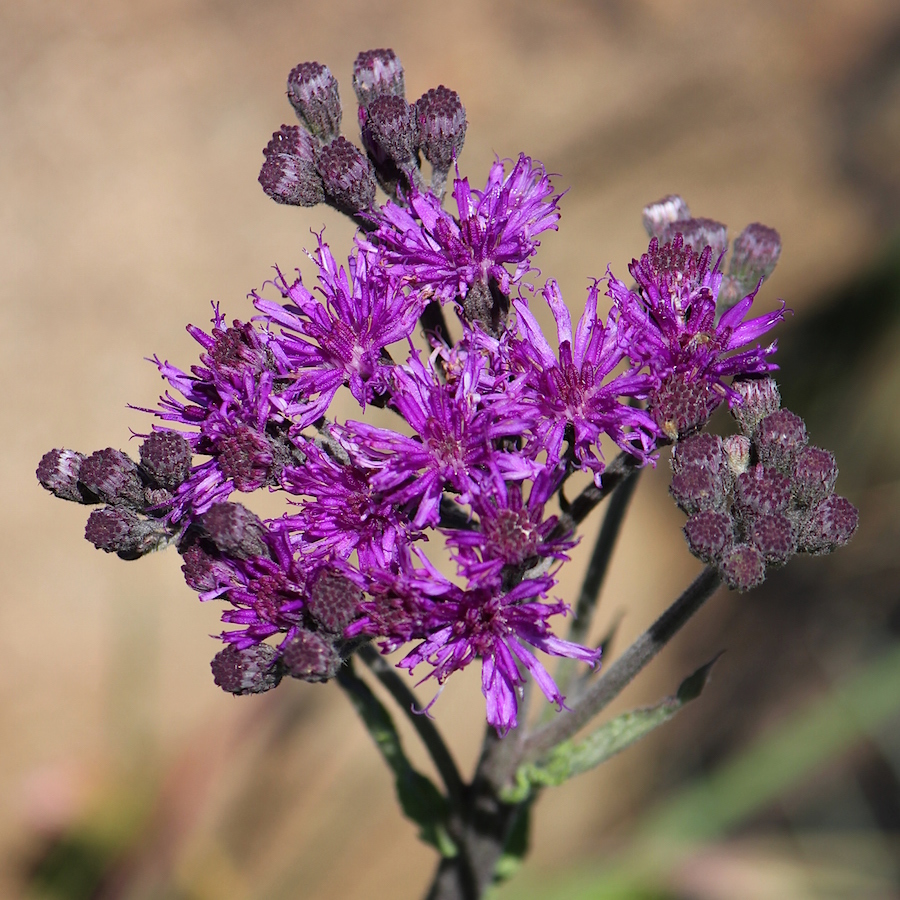Name: Graderia scabra (L.f.) Benth.Family: Orobanchaceae Common names: Pink ground-bells (Eng.), Wild penstemon (Eng.), Inkunzi (Eng.), Impundu (Zul.), ibeja(Zul.), Ugweja (Zul.), Isiqomiso (Zul.), Umphuphutho (Zul.), Uvelabahleke(Zul.) Isimonya (Xho.)

Graderia scabra is a perennial shrublet with an erect growth form. It grows up to 600mm. It has a woody rootstock, stems are either hairless or hairy. The leaves are overlapping, grows about ±50 x 15mm, margins are entire and they do not have leaf stalk. Between August and December, it produces flowers that grows up to ±30mm, are pink to deep mauve or reddish or whitish in colour. They are also thinly hairy and have 5 lobed calyx.
It is found in grasslands with elevation of up to 2100m. In South Africa, it occurs only in Eastern Cape, Gauteng, KwaZulu-Natal, Mpumalanga and the Western Cape provinces. It is also found in eSwatini (Swaziland), Zimbabwe, Tanzania and Angola.
Graderia scabra, previously known as Bopusia scabra in old literature. It belongs to the Orobanchaceae family, which is a large family of approximately 101 genera. The Graderia genus is native to South Africa and comprises three known species.


The plant was initially described as a member of the genus Gerardia, which is named after the English botanist John Gerard. However, George Betham later transferred G. scabra to a new genus that he named “Graderia.” Interestingly, Betham created this new genus name by rearranging the letters of “Gerardia,” forming an anagram. The specie name “scabra” is derived from the Latin word “scabo,” which means ‘to scratch’ or ‘rough.’ This name is in reference to the presence of hairs on the leaves and the stem of the plant.
Graderia scabra flowers attracts bees, potentially due to the darker throat area or the presence of dark veins, which might serve as guides to nectar. The wide-open nature of the blossoms also makes it easy for pollinators to reach them, allowing various types of insects, not limited to bees, to visit these flowers.

Graderia scabra serves a dual purpose; it is used as an ornamental plant in gardens and parks and as a medicinal plant. The plant has a history in traditional medicine, often combined with other plants, to address a variety of health concerns. These include stomach issues, fevers, skin rashes, sores, prevention of miscarriage, alleviation of menstrual pain, and even its use as a component in love charm emetics.
Cold water infusions of the leaves mixed with those of various plants such as Antidesma venosum, Trimeria grandifolia, Zanthoxylum capense and Canthium inerne are used for stomach complaints. They may help with digestive issues or provide relief from gastrointestinal discomfort. The cold water infusions are also administered as enemas, which could potentially help with digestive and stomach issues, such as constipation or cleansing the digestive tract. The inner root bark, when mixed with the roots of Tephrosia macropoda, is used to treat various febrile conditions, including typhoid fever. This suggests that these plants may have properties that help reduce fever and treat related symptoms. The roots are used as strong purgatives to induce bowel movements and cleanse the intestines. A paste made from dried roots, pulverized with those of an unidentified Gnidia species and mixed with wet termite earth, is applied to smallpox rashes. A paste made from ground moisture roots is applied to sores, indicating its use for wound healing or soothing skin irritations. The name “Isimonyo” suggests that the roots are also used as an ointment for the face for cosmetic or skincare purposes. Men use root infusions as love charm emetics, indicating a belief in their potential to affect romantic or love-related aspects. The plant is also utilized by either being snuffed, inhaled, or used as an emetic to address issues related to sexual complaints.

Additional Medicinal Uses: In Sotho culture, decoctions from unspecified plant parts in combination with parts of Salvia runcinata L. are used to prevent miscarriages and alleviate menstrual discomfort. In the Pondoland region young boys who are just beginning to show an interest in girls and engage in efforts to capture their attention, they chew the roots of this plant and then apply the saliva to their hands and faces as a form of fragrance or perfume.
Graderia scabra is one of those plants which are difficult to grow. It is a hemi-parasitic plant and it receives part of its nutrition from another plant, the host, without contributing to the benefit of the host. Therefore, it’s complicated parasitic behaviour makes it hard to cultivate. It would be ideally to firstly grow the host plant, but currently hosts are unknown. Sow the seeds close to the roots of the host. The seeds have very little stored food, so quick contact with the host is crucial after germination. After sowing the seeds, it is best to put the plant in a sunny position and keep the soil damp for at least a fortnight. Use loamy soil and add compost. and perhaps some organic fertilizer.
Compiled by: Sharlotte Kwenaite and Dineo Dibakwane of South African National Biodiversity Institute. Thanks to Peter Warren for the images.








































































































































































































































































































































